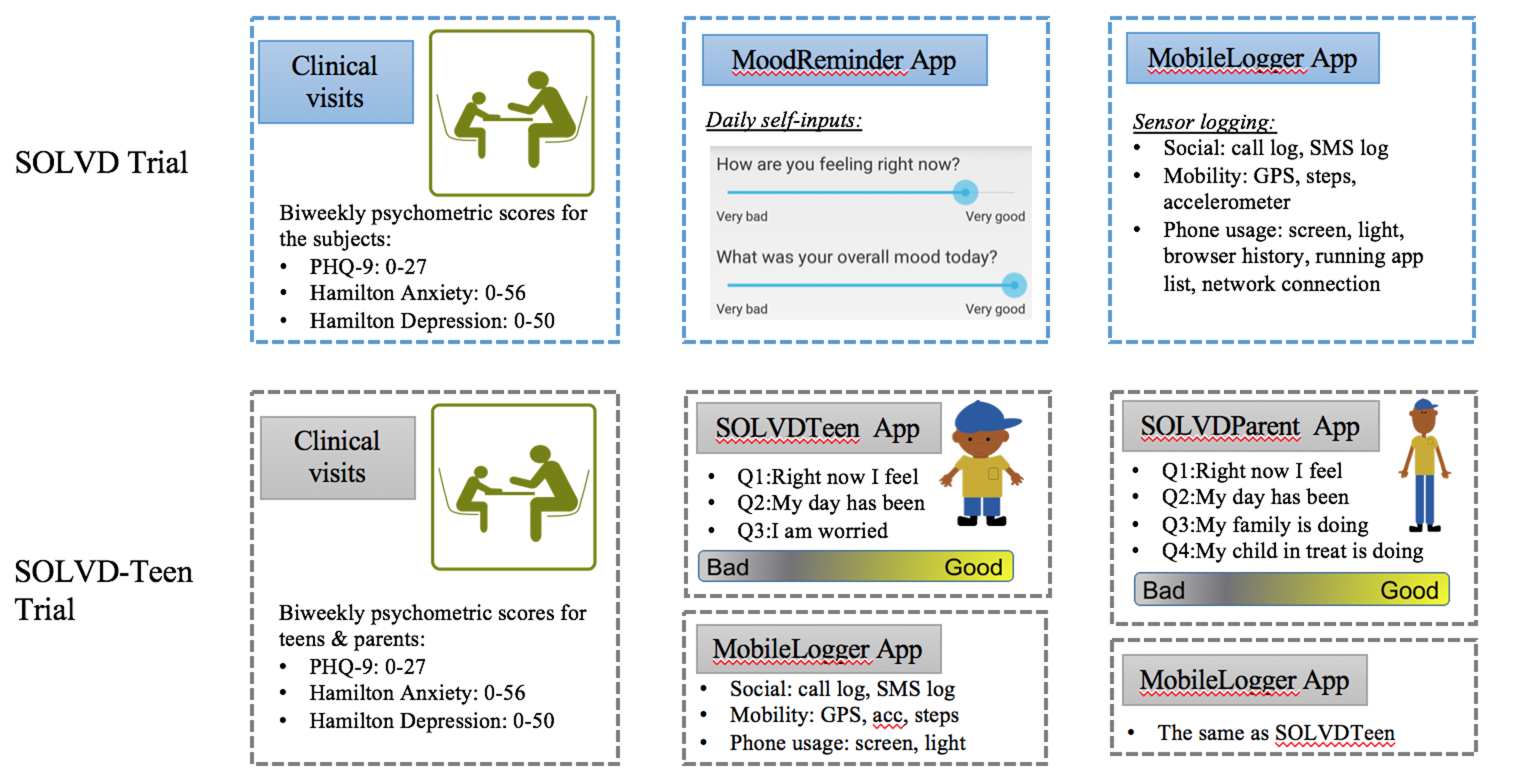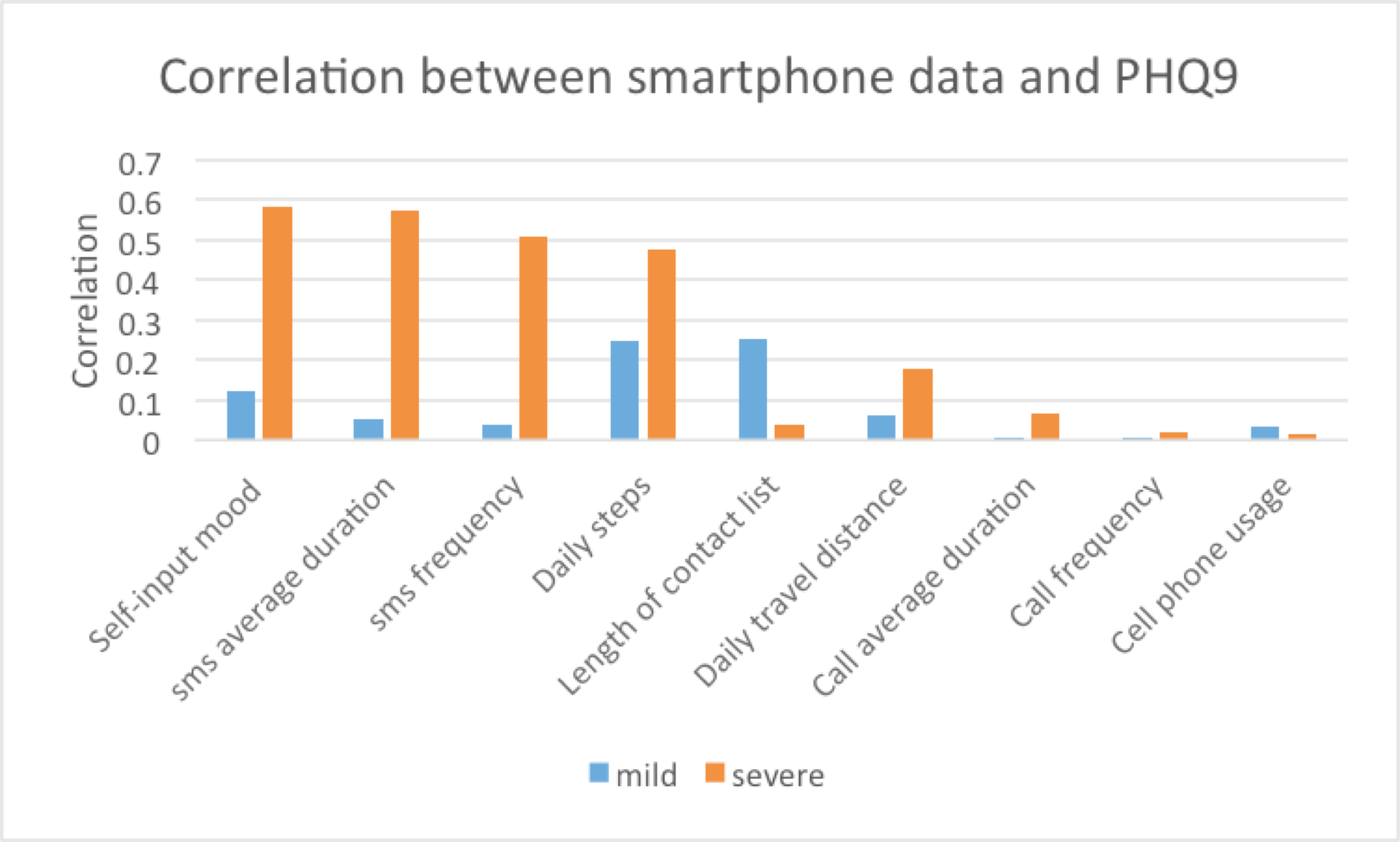SOLVD
Smartphone- and OnLine-Usage-Based Evaluation for Depression

The Problem:
Depression is one of the most common mental disorders that carries significant emotional and financial burden for modern society. At any point in life, 3 to 5 percent adults suffer from major depression, and the lifetime risk is about 17 percent. The situation is even worse for teens and young children, with 2 out of 100 young children and 8 out of 100 teens having serious depression. To ensure successful prevention and treatment, the early diagnosis and continuous monitoring of one’s depression state are critical. However, depression is often monitored through clinician psychometric instruments, and there is still a lack of an effective method to automatic and continuously track the patient’s mental health status.
Our Solution:
We propose to develop the Smartphone- and OnLine-usage-based eValuation for Depression (SOLVD), which is a new tool for continuous and real-time monitoring of the patient’s depression state. We develop the SOLVD mobile app and the backend cloud platform, for data collection, storage, analysis and sharing.
In the study, we collect three types of data from clinically depressed patients:
- Self-reported mood and activity level on daily basis, as well as the evaluations from the teens’ parents.
- Passive smartphone sensor and usage data.
- Psychometric data from biweekly in-clinic exams, including PHQ-9, HamiltonD and HamitonA.
We conducted two single-arm clinical trials on 25 adult patients and 13 adolescent patients with major depressive disorder. Each subject was enrolled in the study for a 2-month data collection. For both populations, we observed a significant correlation between the self-evaluated mood averaged over a 2-week period and the biweekly psychometric scores (|r| > 0.5, p < 0.05). The daily steps taken, SMS frequency and average call duration were also highly correlated with clinical scores. Moreover, the correlation coefficients were higher in the moderate to severe group than the mild group.
Main Finding:
- Smartphone applications such as SOLVD represent a useful way to monitor depressive symptoms in a clinically depressed population. Patients are comfortable with smartphone tracking, and do not perceive it as intrusive.
- We observed a stronger correlation between daily self-reported moods and PHQ-9, HAM-D, and HAM-A in both age groups. Lower text messaging / phone call frequency and shorter text message length / phone call duration were predictive of higher depression symptoms. An increase in depressive symptoms was also correlated with a decrease in number of steps taken.
- The prediction accuracy of PHQ-9 could be improved by adding the evaluations from parents, apart from self-inputs from the teens. Besides, by using only passive smartphone sensory data, we could achieve similar accuracy as using only active user inputs.



Team

Jian Cao
Graduate Student, ECE
Rice University
Anh Truong
Baylor College of Medicine

Dr. Nidal Moukaddam
Assistant Professor
Baylor College of Medicine

Dr. Ashutosh Sabharwal
Professor
ECE, Rice University
Paper
[1] “Concordance Of Clinical & Electronic Data In Assessment of Depression: Findings From The Smartphone And Online Usage Based Evaluation For Depression (SOLVD) Study,” APA 2016. See also news story.
[2] Truong, A. L., Banu, S., Cao, J., Shah, A., Moukaddam, N., & Sabharwal, A. “ Smartphone and Online Usage-Based Evaluation in Teens (SOLVD-Teen): Can an App Help Teens and Their Parents With Depression?,” Journal of the American Academy of Child & Adolescent Psychiatry, 56(10), S216, 2017.
